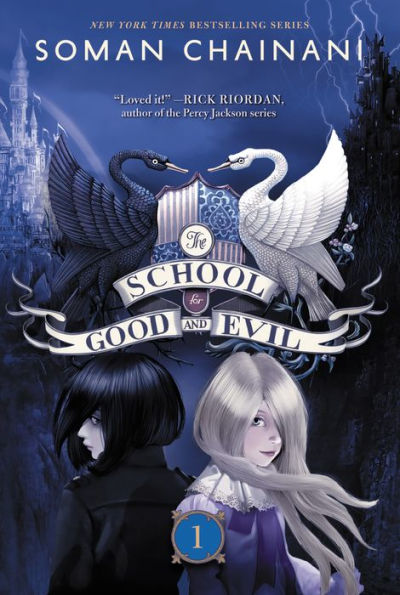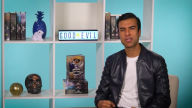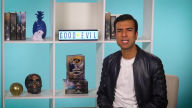Gr 5–8—Every four years in the village of Gavaldon, two children are stolen away by a mysterious person known only as the Schoolmaster. These children become students at the School for Good and Evil. One will be taught the ways of goodness, honor, and beauty; the other will be instructed in the ways of darkness and villainy. Twelve-year-old Sophie just knows she's destined to be picked for the school of Good this year, and can't wait to assume the role of a princess and meet her Prince Charming. Her best friend, Agatha, is surely villain material with her dumpy looks, black clothes, and dour demeanor. So how is it that Sophie winds up in the School for Evil and Agatha the School for Good? Now both girls must work to succeed in their new roles or face dire consequences. The girls' friendship will be put to the test in ways they never imagined. This debut fantasy will attract sophisticated readers with a love of fairy tales, particularly the dark side of them. Despite some redundant scenes and pacing issues, there's plenty of action and emotion to keep an audience well entertained. Fans of Adam Gidwitz's A Tale Dark and Grimm (Dutton, 2010) and Shannon and Dean Hale's graphic novel Rapunzel's Revenge (Bloomsbury, 2008) will be swept along in this wild story of good, evil, and two friends caught in between.—Stephanie Whelan, New York Public Library
At first glance, Chainani's debut appears to resemble the trend-following herd. There's the secret school that sorts its students into apparently predestined categories, courtesy of J.K. Rowling. There's the knowing, slightly shocking narration, full of farts and greasy hair, borrowed from Roald Dahl via Lemony Snicket. But Chainani's story gradually takes on dimension. Sophie and Agatha are plucked from their hometown of Gavaldon, where children are voracious readers of fairy tales. A skeletal bird drops them at the School for Good and Evil, populated by the living embodiments of these tales—princesses, princes, and villains in training. The girls soon discover, however, that these fledgling stereotypes have never read the stories. Sophie and Agatha are the only "Readers" in their class—shunned, mocked, but also feared. While the notion that conventions of good and evil don't tell the whole truth is hardly new, exploring the middle ground moves Chainani's novel out of its own ruts and, in the process, shows readers a hyperactively imaginative way to leave black-and-white thinking behind. Ages 8–12. Agent: Jane Startz, Jane Startz Productions. (May)
Invention in overdrive…The School for Good and Evil is a comedic education by a writer primed to shoot to the head of the class. — Gregory Maguire, author of Wicked and Matchless
“Rich and strange.” — Kirkus Reviews
“A fairy tale like no other, complete with romance, magic, humor, and a riddle that will keep you turning pages until the end.” — Ann M. Martin, author of the bestselling Babysitter’s Club series
“Chainani has imagined the world where fairy tales come to life, where for every fairy princess with a ‘Happily Ever After’ in her future there is a villain with a tragic fate in store. But in The School for Good and Evil it’s not always certain which is which.” — David Magee, screenwriter of Life of Pi and Finding Neverland
“In Chainani’s richly imagined world the action never lets up for a nano-second. Young readers won’t be able to stop turning the pages till they reach the surprising and satisfying conclusion.” — Tor Seidler, author of Mean Margaret, a National Book Award Finalist
“Chainani takes the racing energy of Roald Dahl’s language and combines it with the existential intensity of J.K. Rowling’s plots to create his own universe. THE SCHOOL FOR GOOD AND EVIL uses the sorcery of words and the poetry of friendship to startle, enchant, and keep us turning pages.” — Maria Tatar, Chair of Folklore and Mythology Program, Harvard University and Editor of The Classic Fairy Tales
“Wow. From the very first sentence, you know you’re entering a thrilling world of strange fantasy... A wild and dangerous fairy tale ride. I loved this book.” — R. L. Stine, author of the bestselling Goosebumps series
“[A] whip-smart debut...If I could bewitch you all to read it, I would. Grade: A.” — Entertainment Weekly
Invention in overdrive…The School for Good and Evil is a comedic education by a writer primed to shoot to the head of the class.
Wow. From the very first sentence, you know you’re entering a thrilling world of strange fantasy... A wild and dangerous fairy tale ride. I loved this book.
Chainani has imagined the world where fairy tales come to life, where for every fairy princess with a ‘Happily Ever After’ in her future there is a villain with a tragic fate in store. But in The School for Good and Evil it’s not always certain which is which.
In Chainani’s richly imagined world the action never lets up for a nano-second. Young readers won’t be able to stop turning the pages till they reach the surprising and satisfying conclusion.
[A] whip-smart debut...If I could bewitch you all to read it, I would. Grade: A.
A fairy tale like no other, complete with romance, magic, humor, and a riddle that will keep you turning pages until the end.
Chainani takes the racing energy of Roald Dahl’s language and combines it with the existential intensity of J.K. Rowling’s plots to create his own universe. THE SCHOOL FOR GOOD AND EVIL uses the sorcery of words and the poetry of friendship to startle, enchant, and keep us turning pages.
Chainani works an elaborate sea change akin to Gregory Maguire's Wicked (1995), though he leaves the waters muddied. Every four years, two children, one regarded as particularly nice and the other particularly nasty, are snatched from the village of Gavaldon by the shadowy School Master to attend the divided titular school. Those who survive to graduate become major or minor characters in fairy tales. When it happens to sweet, Disney princess–like Sophie and her friend Agatha, plain of features, sour of disposition and low of self-esteem, they are both horrified to discover that they've been dropped not where they expect but at Evil and at Good respectively. Gradually--too gradually, as the author strings out hundreds of pages of Hogwarts-style pranks, classroom mishaps and competitions both academic and romantic--it becomes clear that the placement wasn't a mistake at all. Growing into their true natures amid revelations and marked physical changes, the two spark escalating rivalry between the wings of the school. This leads up to a vicious climactic fight that sees Good and Evil repeatedly switching sides. At this point, readers are likely to feel suddenly left behind, as, thanks to summary deus ex machina resolutions, everything turns out swell(ish). Rich and strange (and kitted out with an eye-catching cover), but stronger in the set pieces than the internal logic. (Fantasy. 11-13)








